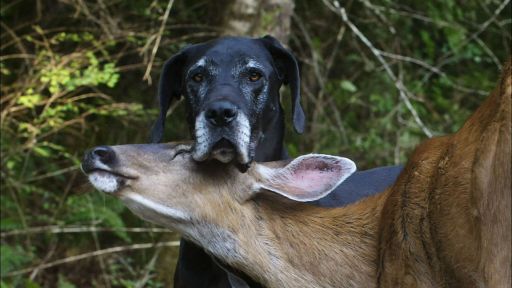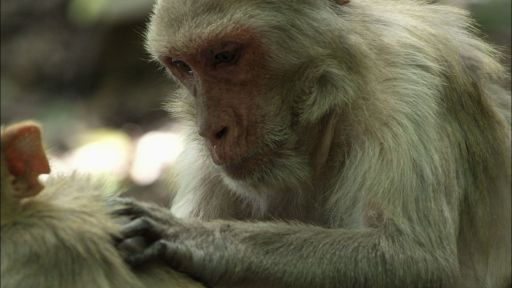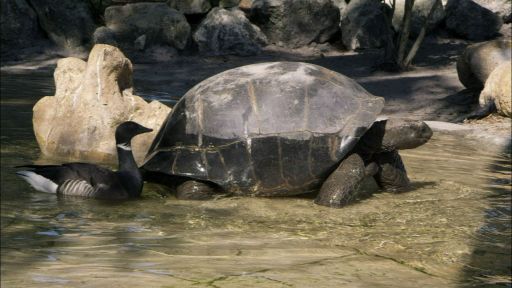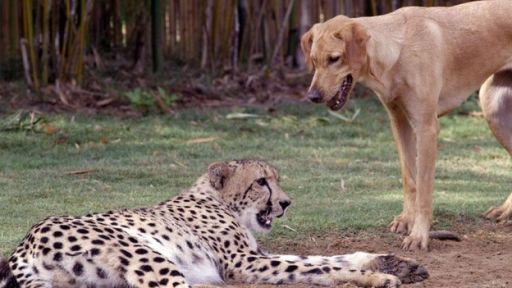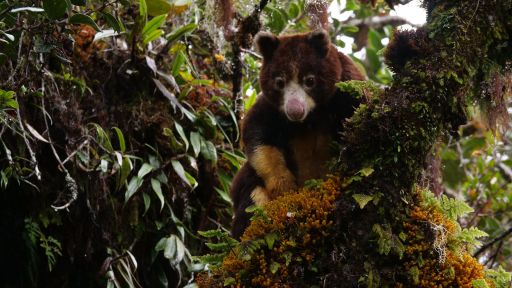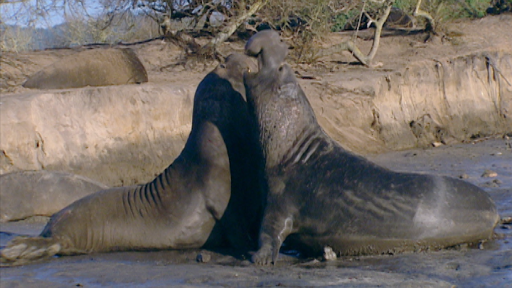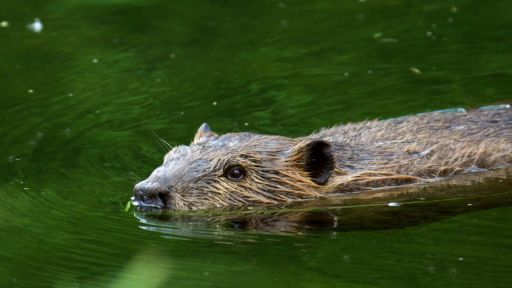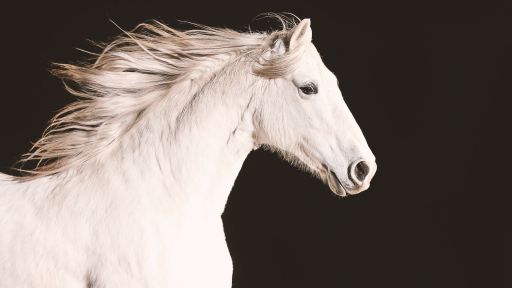Chapter One
The Case for Animal Emotions and Why They Matter
Many animals display their feelings openly, publicly, for anyone to see. And when we pay attention, what we see outside tells us lots about what’s happening inside an individual’s head and heart. As we’ll find, careful scientific research is validating what we intuitively understand: that animals feel, and their emotions areas important to them as ours are to us.
A few years ago my friend Rod and I were riding our bicycles around Boulder, Colorado, when we witnessed a very interesting encounter among five magpies. Magpies are corvids, a very intelligent family of birds. One magpie had obviously been hit by a car and was lying dead on the side of the road. The four other magpies were standing around him. One approached the corpse, gently pecked at it – just as an elephant noses the carcass of another elephant – and stepped back. Another magpie did the same thing. Next, one of the magpies flew off, brought back some grass, and laid it by the corpse. Another magpie did the same. Then, all four magpies stood vigil for a few seconds and one by one flew off.
Were these birds thinking about what they were doing? Were they showing magpie respect for their friend? Of were they merely acting as if they cared? Were they just animal automatons? I feel comfortable answering these questions, in order: yes, yes, no, no. Rod was astounded by how deliberate the birds were. He asked me if this was normal magpie behavior, and I told him that I’d never seen anything like this before and hadn’t read any accounts of grieving magpies. We can’t know what they were actually thinking of feeling, but reading their actions there’s no reason not to believe these birds were saying a magpie farewell to their friend.
Despite the more than three decades I’ve spent studying animal species, I never cease learning from the individuals I encounter. Red foxes live near my mountain home outside of Boulder, Colorado. As I stare into the eyes of a red fox sitting by my study and watching me type, or as I observe red fox pups playing with one another or a female red fox burying her mate, I can’t help but reflect deeply on what it’s like to be these individuals sharing my hillside. Many animals live on the surrounding land – coyotes, mountain lions, porcupines, raccoons, black bears, a wide variety of birds, and lizards, along with many dogs and cats. Through the years, they’ve been my friends and teachers.
In my musings about animal emotions I also can’t help wondering, What about the insects? Do even mosquitoes have emotional lives? Of course, mosquitoes have tiny brains and lack the neural apparatus necessary for the evolution of emotions, so it’s doubtful they do. But in truth, we just don’t know. One day, perhaps we’ll figure out a way to determine this. More important, however, would it make a difference to us if they did? It should, just as it should make a difference to us that other animals have emotions. Knowing that animals feel – and being able to understand them when they express joy, grief, jealousy, and anger – allows us to connect with them and also to consider their points of view when we interact with them. Knowledge about animal passions should make a difference in how we view, represent, and treat our fellow beings.
THICK SKIN AND TENDER HEARTS:
Babyl the Elephant and Her Unconditional Friends
A recent trip to Kenya and Tanzania opened my eyes to the world of elephants, who are some of the most amazing beings I’ve ever seen. Observing large groups of wild elephants close up I could feel their majestic presence, awareness, and emotions. These firsthand experiences were wholly different than seeing captive elephants, who often live alone, in the confines and unnatural settings of a zoo, and my visit was deeply spiritual, inspirational, and transformative.
While we were watching a group of wild elephants living in the Samburu Reserve in Northern Kenya, we noted that one of them, Babyl, walked very slowly. We learned that she was crippled and that she couldn’t travel as fast as the rest of the herd. However, we saw that the elephants in Babyl’s group didn’t leave her behind; they waited for her. When I asked our guide, the elephant expert Iain Douglas-Hamilton, about this, he said that these elephants always waited for Babyl, and they’d been doing so for years. They would walk for a while, then stop and look around to see where Babyl was. Depending on how she was doing, they’d either wait or proceed. Iain said the matriarch even red her on occasion.
Why did the other elephants in the herd act this way? Babyl could do little for them, so there seemed no reason for or practical gain in helping her. The only obvious conclusion we could draw was that the other elephants cared for Babyl, and so they adjusted their behavior to allow her to remain with the group.
Friendship and empathy go a long way. And Babyl’s friends aren’t an isolated example. In October 2006 in a small village in eastern India, a group of fourteen elephants crashed through a village looking for a group member who had fallen into a ditch and drowned. Residents had already buried the seventeen-year-old female elephant, but still, thousands of people were forced to flee their homes as the other elephants searched and rampaged for more than three days.
THE HEART IS THE MATTER
In September 2006 there was a meeting about animal welfare called “The Heart of the Matter.” It’s nice to see scientists finally using the word heart, for the heart is the matter.
I study animal emotions and I love what I do. Over the course of my career, I’ve studied a wide variety of animals – coyotes, wolves, dogs, Adélie penguins, archer fish, western evening grosbeaks, and Steller’s jays – and I’ve tackled a wide range of questions, dealing with everything from social behavior, social organization, and social development to communication, play, antipredatory behavior, aggression, parental behavior, and morality. To me, the evidence for animal emotions is impossible to deny, and it is widely supported by our current knowledge in animal behavior, neurobiology, and evolutionary biology.
In fact, the study of animal emotions is a dynamic and rapidly developing field of science, and there’s no shortage of interest in animal emotions among scientists and average folks alike. In March 2005 about six hundred people from more than fifty nations gathered in London at a landmark meeting sponsored by the Compassion in World Farming Trust to learn more about animal sentience, animal consciousness, and the emotional lives of animals. In October 2006 the World Society for the Protection of Animals organized a conference in Rio de Janeiro to discuss how to improve animal welfare on farms and in research labs. Organizers expected about two hundred people, but twice that many attended, coming predominantly from Brazil and surrounding countries. The favorable response to the meetings in London and Rio is indicative that the time really has arrived for us to come to terms with the emotional lives of animals.
Stories about animal emotions and our complicated interrelationships with animals appear with increasing frequency in the press, from prestigious scientific journals like Science, Nature, Trends in Ecology and Evolution, and the Proceedings of the National Academy of Sciences to the New York Times, Psychology Today, Scientific American, Time, The Economist, and even Reader’s Digest. The emotional lives of animals was even the subject of a surprise hit movie, The March of the Penguins. Released in summer 2005, the documentary poignantly depicts penguin feelings and demonstrates how they experience suffering but also how they endure the most extreme challenges as they care for their eggs and their young.
Nevertheless, despite mounting scientific evidence and widespread popular belief, a decreasing few within the scientific community remain skeptical. Some still doubt that animal emotions even exist, and many who believe they do exist tend to think animal emotions must be lesser than human ones. This seems to me an outdated and even irresponsible point of view, and my main goal in this chapter – and indeed throughout the book – is to show that animal emotions exist, that they are important to humans, and that this knowledge should influence how we treat our fellow animals.
In discussing animal emotions, I focus mainly on behavioral data and anecdotal stories, weaving in recent discoveries in social neuroscience to show how a combination of common sense and scientific data – what I call “science sense” – makes a strong case for the existence of beastly passions. While stories drive much of my discussion, I bring in scientific studies as necessary for support.
However, once we agree that animal emotions exist and that they matter – which is what a great many people already believe – then what? Then we must consider ethics. We must look to our actions and see if they are consistent with our knowledge and beliefs. I feel strongly that ethics should always inform science. We should always strive to merge knowledge, action, and compassion. Indeed, that is always the heart of the matter.
WHAT ARE EMOTIONS?
It is very difficult to answer the question, “What are emotions?” Most of us know emotions when we see them but find it difficult to define them. Are they physical, mental, or both? As a scientist, I feel safe saying that emotions are psychological phenomena that help in behavioral management and control; they are phenomena that emote us, that make us move. A distinction is often made between “emotional responses” to physical reactions and “feelings” that arise from thoughts. Emotional responses show that the body is responding to certain external stimuli. For example, we see an oncoming car about to hit us and we feel fear – increasing our heart rate, blood pressure, and body temperature. But actually, the fear isn’t felt until the brain responds to the physiological changes that were a reaction to seeing the oncoming car.
Feelings, on the other hand, are psychological phenomena, events that happen solely in an individual’s brain. An external event may trigger one emotion, such as anger or grief, but upon reflection we may decide we feel differently. We may interpret our emotions. Feelings express themselves as different moods. Feelings help us and influence how we interact with others in a wide variety of different social situations.
Charles Darwin, the first scientist to study animal emotions systematically, recognized six universal emotions: anger, happiness, sadness, disgust, fear, and surprise. He maintained these core emotions help us deal rapidly with a wide variety of circumstances and help us to get along in a complex social world. Others have since added to his list. Stuart Walton, in his book A Natural History of Human Emotions, adds jealousy, contempt, shame, and embarrassment to Darwin’s core group, while the neuroscientist Antonio Damasio (in Descartes’ Error) says that social emotions also include sympathy, guilt, pride, envy, admiration, and indignation. It’s interesting that none of these researchers mention love.
Which, if any, of these emotions do animals experience? And do animals experience any emotions that humans do not? This is a very interesting question. Ethologist Joyce poole, who has studied elephants for many years, states: “While I feel confident that elephants feel some emotions that we do not, and vice versa, I also believe that we experience many emotions in common.”
If Poole is right, then there may be some emotions that animals experience that humans will never understand, but there are many that we do. Aren’t animals, human and nonhuman alike, happy when playing of when reuniting with a loved one? Don’t animals become sad after losing a close friend? When wolves reunite, wagging their tails loosely to and fro in a circle, whining and jumping about, are they not displaying happiness? What about elephants who reunite in a greeting celebration, flapping their ears and spinning about and emitting a vocalization known as a “greeting rumble” – is this not happiness? Likewise, what name but grief can we give to the emotion that animals display when they remove themselves from their social group, sulk after the death of a friend, stop eating, and even die? Surely, despite differences, all species must share a similar core of emotions.
PRIMARY AND SECONDARY EMOTIONS
Researchers usually recognize two different types of emotions, primary and secondary emotions. Primary emotions are considered to be basic inborn emotions. These include generalized rapid, reflex-like (“automatic,” or hardwired) fear and fight-or-flight responses to stimuli that represent danger. They require no conscious thought and include Darwin’s six universal emotions: fear, anger, disgust, surprise, sadness, and happiness. Animals can perform a primary fear response, such as avoiding an object, almost unconsciously, before they have even recognized the object generating the reaction. Loud raucous sounds, certain odors, objects flying overhead: these and other such stimuli ate often inborn signals for “danger” that cause an automatic avoidance reaction. There’s little or no room for error when confronted with a dangerous stimulus, so natural selection has resulted in innate reactions that are crucial to individual survival.
Primary emotions are wired into the brain’s evolutionarily old limbic system (especially the amygdala); this is the “emotional” part of the brain (so named by Paul MacLean in 1952). The physical structures in the limbic system and similar emotional circuits are shared among many different species and provide a neural substrate for primary emotions. In his three-brains-in-one (or triune brain) theory, MacLean identifies the reptilian, or primitive, brain (possessed by fish, amphibians, reptiles, birds, and mammals); the limbic, or paleomammalian, brain (possessed by all mammals); and the neocortical, or “rational” neomammalian, brain (possessed by a few mammals, such as primates and humans) – all packaged into the cranium. Each is connected to the other two, but each also has its own capacities. While the limbic system seems to be the main area of the brain in which many emotions reside, current research now indicates that not all emotions are necessarily packaged into a single system, and there may be more than one emotional system in the brain.
Secondary emotions are more complex emotions, and they involve higher brain centers in the cerebral cortex. They could involve core emotions of fear and anger, or they could be more nuanced, involving such things as regret, longing, or jealousy. Secondary emotions are not automatic: they are processed in the brain, and the individual thinks about them and considers what to do about them – what action is the best one to perform in a certain situation. Conscious thought and secondary emotions can influence how we respond to situations that bring forth primary emotions: We may duck as an unseen object flies overhead, but as we recognize that it’s only a shadow, we will refrain from running and instead, feeling a twinge of embarrassment, quickly straighten up and pretend nothing is wrong.
Thinking about the emotion allows for flexibility of response in changing situations after evaluating which of a variety of actions would be the most appropriate to perform in the specific situation. Sometimes, if someone is bothering you, it might be appropriate to get away from them, and sometimes this might create an even worse social situation – depending on who the person is and what kind of consequences you fear. Although most emotional responses are unconsciously generated – they occur without thinking – we learn to try to think before acting. Thinking allows us to make connections between feelings and actions, and this allows for variability and flexibility in our behavior so that, depending on the social situation, we always do the right thing. In this way, evidence of emotions in any creature is also an important step in determining sentience and self-awareness.
From The Emotional Lives of Animals:A Leading Scientist Explores Animal Joy, Sorrow, and Empathy – and Why They Matter by Marc Bekoff. Excerpted by permission of Marc Bekoff.
Marc Bekoff, Ph.D., is a former Professor of Ecology and Evolutionary Biology at the University of Colorado, Boulder, and co-founder with Jane Goodall of Ethologists for the Ethical Treatment of Animals. He has won many awards for his scientific research including the Exemplar Award from the Animal Behavior Society and a Guggenheim Fellowship. Marc has written more than 200 articles, numerous books, and has edited three encyclopedias. His books include the Encyclopedia of Animal Rights and Animal Welfare, The Ten Trusts (with Jane Goodall), the Encyclopedia of Animal Behavior, the Encyclopedia of Human-Animal Relationships, Minding Animals, Animal Passions and Beastly Virtues: Reflections on Redecorating Nature, The Emotional Lives of Animals, Animals Matter, Animals at Play: Rules of the Game (a children’s book), Wild Justice: The Moral Lives of Animals (with Jessica Pierce), The Animal Manifesto: Six Reasons For Increasing Our Compassion Footprint, Ignoring Nature No More: The Case For Compassionate Conservation, and Jasper’s Story: Saving Moon Bears (with Jill Robinson). In 2005 Marc was presented with The Bank One Faculty Community Service Award for the work he has done with children, senior citizens, and prisoners. In 2009 he was presented with the St. Francis of Assisi Award by the New Zealand SPCA.



